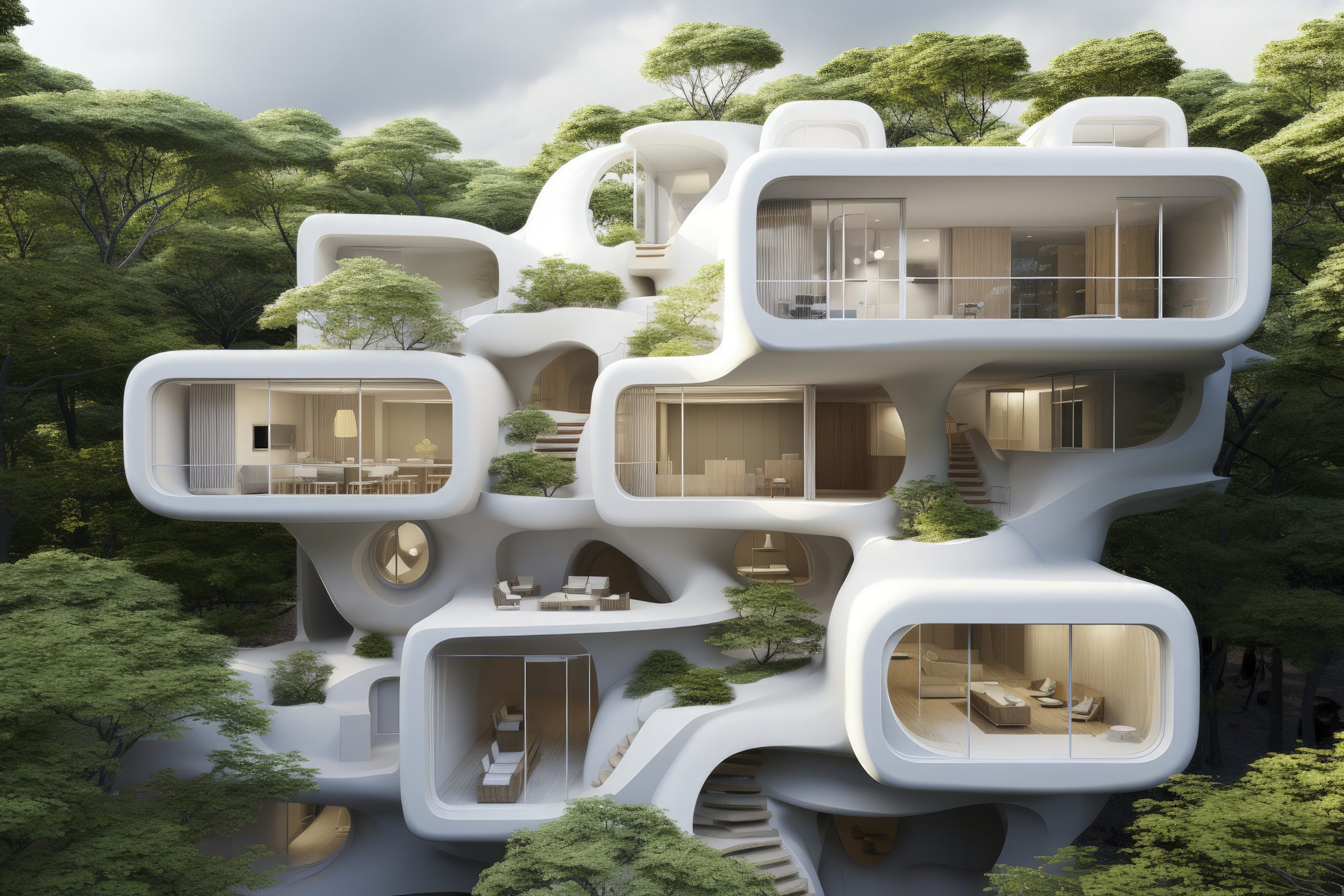Introduction: Behind every awe-inspiring hotel's architecture lies the silent hero: hotel structural engineering. The towering structures that grace skylines and

In the pursuit of environmental sustainability, the role of heating, ventilation, and air conditioning (HVAC) systems in building design has never been more critical. As buildings are responsible for a significant portion of global energy consumption and greenhouse gas emissions, HVAC systems are central to reducing environmental impact. Innovative HVAC design and technology are at the forefront of creating sustainable buildings that reduce energy use, enhance occupant comfort, and lower long-term operational costs.
This article explores future trends in HVAC design that will drive sustainability in buildings. We will discuss cutting-edge technologies and design strategies that focus on energy efficiency, renewable energy integration, and enhanced indoor air quality. InnoDez, a leading name in MEP (Mechanical, Electrical, and Plumbing) design, plays a key role in providing sustainable HVAC solutions that shape modern building infrastructure.
Smart HVAC systems are revolutionizing the building industry. These systems leverage Internet of Things (IoT) technology to create a more responsive and efficient approach to heating and cooling. Through sensors, automation, and AI-powered analytics, smart HVAC systems optimize energy use by adjusting settings based on real-time conditions, including occupancy, weather changes, and even indoor air quality.
InnoDez leverages these technologies in its MEP designs, incorporating smart HVAC systems that maximize energy savings and provide superior performance in residential and commercial buildings.
Renewable energy integration is a key trend in HVAC design for sustainable buildings. HVAC systems traditionally rely on electricity generated from non-renewable sources, but modern designs focus on reducing dependence on fossil fuels by incorporating renewable energy technologies.
InnoDez is actively involved in integrating renewable energy solutions into HVAC designs, ensuring that buildings are not only efficient but also capable of utilizing clean, sustainable power sources.
Variable Refrigerant Flow (VRF) systems have emerged as a game-changing technology for HVAC design. These systems allow for precise control of refrigerant flow to different areas of a building, enabling simultaneous heating and cooling in different zones, and adjusting the cooling or heating load according to each zone’s needs.
InnoDez incorporates VRF systems into its MEP design projects, delivering cutting-edge solutions that improve both energy efficiency and building occupant satisfaction.
Energy Recovery Ventilation (ERV) systems are becoming an essential component of HVAC design for sustainable buildings. These systems recover energy from exhausted air and use it to condition incoming fresh air. By reusing the energy from stale indoor air, ERV systems significantly reduce the overall energy consumption of a building’s HVAC system.
InnoDez integrates ERV systems into its designs, ensuring that buildings not only reduce energy waste but also promote a healthy indoor environment for occupants.
As the HVAC industry moves towards sustainability, the adoption of low-global warming potential (GWP) refrigerants is gaining traction. Conventional refrigerants, such as hydrofluorocarbons (HFCs), have been found to contribute significantly to global warming. The shift to low-GWP refrigerants is a critical step in reducing the environmental impact of HVAC systems.
InnoDez is ahead of the curve in implementing low-GWP refrigerants in its HVAC designs, ensuring compliance with environmental standards and reducing the carbon footprint of buildings.
Passive HVAC design refers to utilizing the natural properties of a building and its surroundings to regulate indoor temperatures without the need for mechanical systems. By leveraging natural ventilation, shading, and insulation, passive HVAC design minimizes the need for active heating and cooling systems.
InnoDez works with architects and developers to incorporate passive and hybrid HVAC strategies, making buildings more resilient and sustainable while reducing energy consumption.
The push towards decarbonization is perhaps the most significant trend shaping the future of HVAC design. As governments and organizations worldwide commit to net-zero carbon goals, the HVAC industry is evolving to meet these targets.
InnoDez plays a pivotal role in designing HVAC systems that support the decarbonization of buildings, working with clients to create energy-efficient and grid-responsive solutions.
The COVID-19 pandemic has heightened awareness around indoor air quality (IAQ), making it a critical consideration in HVAC design. Sustainable buildings must now prioritize not only energy efficiency but also the health and well-being of occupants.
InnoDez integrates IAQ solutions into its MEP designs, ensuring that buildings provide safe and healthy environments while maintaining energy efficiency.
The future of HVAC design for sustainable buildings is characterized by energy efficiency, renewable energy integration, and a focus on indoor air quality. As technology advances, smart systems, passive strategies, and decarbonization efforts will play a central role in reducing the environmental impact of buildings. InnoDez continues to lead the way in innovative MEP design, offering comprehensive HVAC solutions that meet the demands of modern sustainability goals.
By staying at the forefront of these trends, InnoDez ensures that the buildings of tomorrow are not only energy-efficient and environmentally friendly but also comfortable and healthy for their occupants.
About Author
Xhuljo Jakup